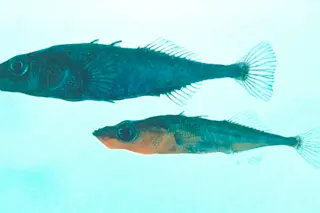In tomorrow's New York Times I have an article about the origin of species--or rather, blocking the origin of species. The evolution of a new species can be a drawn out process, taking thousands or millions of years. First populations begin to diverge from each other. Later, those populations may become divided by significant reproductive barriers. Even after those populations have evolved into separate species, they may still be able to produce hybrids in the right conditions. In some cases, those hybrids may remain rare and the two species will remain intact. In other cases, the species may collapse back on each other. The article looks at two animals in which speciation appears to be going in reverse. One is three-spined sticklebacks, which have evolved into two easily distinguished different species in 11,000 years in six separate lakes in Canada. (The papers are here and here.) In one lake, an ...
Manimals, Sticklebacks, and Finches
Explore the origin of species and how reverse speciation threatens biodiversity with examples from Darwin's finches and sticklebacks.
More on Discover
Stay Curious
SubscribeTo The Magazine
Save up to 40% off the cover price when you subscribe to Discover magazine.
Subscribe













